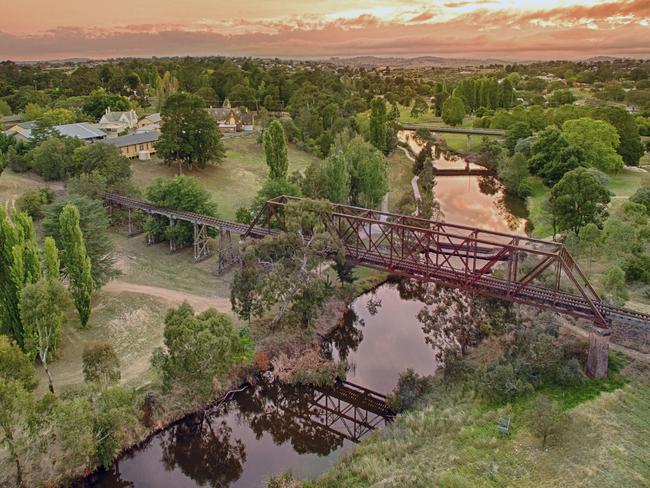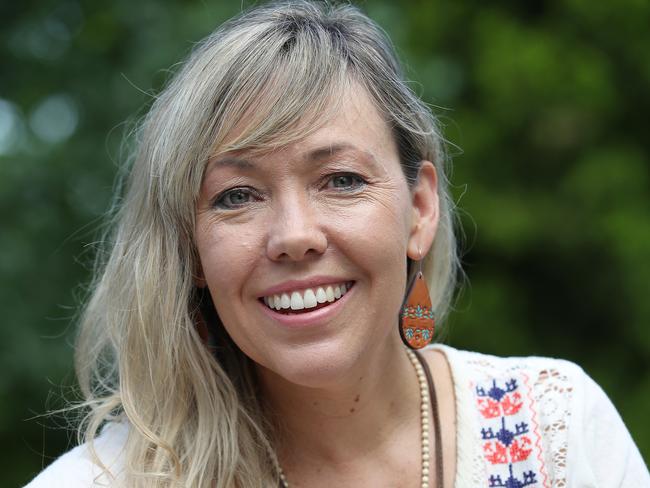Country music star Felicity Urqhart reveals personal struggles after husband’s death
Felicity Urquart could feel herself struggling as the anniversary of her husband’s sudden death approached. But a moving idea from one of her kids changed everything.
NSW
Don't miss out on the headlines from NSW. Followed categories will be added to My News.
It was thrust into the national spotlight when 33 people tragically lost their lives in last year’s deadly bushfires. But the NSW south coast holds another unenviable title – the suicide capital of NSW.
In a grim reminder of the mental health battle facing our state, the area from Bateman’s Bay to the Victorian border lost 68 people to suicide between 2015 and 2019.
This is compared to the 33 lives lost to the bushfires which ravaged the region from September 2019 through to January 2020.
Analysis of Australian Institute of Health and Welfare (AIHW) data reveals the south coast area has a suicide rate of 21.5 per 100,000 people – the highest rate in NSW and an increase on the previous year.
Taree, Inverell, Yass and the Clarence Valley are the next worst affected.

News Corp Australia this week launches Mental Health 360, bringing together mental health experts and those touched by it first-hand.
Panel experts include former Australian of the Year Professor Patrick McGorry, Sydney University’s Professor Ian Hickie, child psychiatrist Professor Jon Jureidini, Chris Turton who lost his son Dan to suicide, Kids Helpline CEO Tracy Adams, ccountry music star and Rural Adversity Mental Health Program ambassador Melinda Schneider and Federal Health Minster Greg Hunt.
Together with Sky News’ Peter Stefanovic and senior journalists Sue Dunlevy, Ben Pike, Natasha Bita and Kathy McCabe, Mental Health 360 dissect what is arguably the biggest issue impacting Australians.
“I think we are seeing in the coastal regions the cumulative effects of the bushfires, social dislocation and the consequent effects of further trauma through COVID-19,” Professor Hickie said.
“These are the areas where there are already economic impacts, disruption and now there are additional effects.
“It’s very similar to what’s happening on the north coast of NSW. We talk about this idea of stacked distress.”

In the direct aftermath of the 2019–20 bushfires, it has been estimated that more than half of Australian adults felt anxious or worried about the bushfires, according to a recent AIHW study.
To tackle the problem the Suicide Prevention Collaborative in the Illawarra Shoalhaven is providing classes in resilience and self help to students in year 9 as well as training members of the community in the skills they need to help in a mental health crisis.
They have established an after care program to follow up people after a suicide attempt and are ensuring they are connected to community mental health services.
Work is being done to better publicise where people can go for help and to start a community conversation around suicide.
The figures also reveal a yawning gap between suicide rates in the bush and Sydney – where the overwhelming majority of mental health professionals live.
Gosford and Wyong on the state’s Central Coast are the second and third-worst areas in the Greater Sydney region – behind the Sydney CBD.
Those Central Coast locations lost 222 people to suicide from 2015-19 with a suicide rate of between 12.99 and 13.73 per 100,000 residents.
“Gosford on the Central Coast has been known for a considerable period of time as having issues and has been the subject of particular inventions,” Prof Hickie said.
The inner city of Sydney has Sydney’s highest suicide rate, at 14.6 deaths per 100,000 people.
Yet there are 27 other rural and regional locations with a higher suicide rate.
Richmond and Windsor, Mount Druitt, the Inner West and Penrith are the other areas in Sydney most impacted by suicide.
Analysis of the AIHW data reveals all but one of the 20 deadliest postcodes for suicide are all in rural Queensland, Western Australian, the Northern Territory and Tasmania.
A significant problem has also been identified in major city centres, as well as at Surfers Paradise on the Gold Coast.
The sobering statistics come as the country struggles to recover from the economic fallout caused by COVID-19 pandemic.

Professor McGorry said the statistics “are so shocking – it’s like a war zone”.
“There’s more than 15,500 people who have died in that five year period. If the cause of death were something different – like drownings or car accidents – it would be in people‘s faces and on the front page,” he said.
“But because of the taboo, and that it is not spoken about freely, it’s muffled conversation, tinged with shame still. Suicide is still a largely hidden death toll.
“Even though there are hot spots in some areas with twice the rate of others, it is the uniformity of suicide that has really struck me. Communities are losing dozens of people every five years.”
Suicide Prevention Australia CEO Neives Murray said “we can’t underestimate the impact that the events of COVID19 is having today and into the future”.
“COVID-19 has amplified the factors we know link with distress and suicide, including unemployment, housing insecurity and financial stress,” she said.
“Fortunately, recent suicide deaths data in NSW and Victoria show that in contrast to some of the predictions, we are not seeing a spike in suicide rates in 2020.
“This means that the protective measures put in place by Governments across Australia are having an impact. These include things like the NSW Government’s significant investment in scaling up mental health and suicide prevention services, the Victorian Government’s investment in post-crisis aftercare, coupled with the Commonwealth Government’s support for JobKeeper and JobSeeker.
“Of course, we can’t be complacent. The next months and years will be challenging and that’s why we will work closely with Government and our members to ensure we continue to strengthen the suicide prevention and mental health systems,” Ms Murray said.
January and February are the deadliest months for suicides, according to the AIHW, with the most common contributing factors to suicide including a history of self-harm, disruption of family by separation and divorce, relationship problems, the disappearance and death of a family member and legal problems.
Between 2017 and 2019 the contributing factors which saw significant increases included relationship problems, social exclusion and rejection and a family history of mental illness.
“In rural and regional areas unemployment rates are higher, there are more poor people and opportunities are less for employment and participation,” Prof Hickie said.
“There are also economies which are subject to more rapid changes in fortune whether that be natural events – such as floods and other natural disasters – or through the opening and closing of key industries.
“Young people, Indigenous people, people with very limited education and skills are over represented – all of which create a background higher intrinsic suicide rates in those communities.”
‘WE ALL NEED TO THINK WE MATTER’
As the first anniversary of the suicide of her much-loved husband Glen Hannah loomed in May, country music star Felicity Urquhart could feel herself struggling.
The mum of nine-year-old Tia and seven-year-old Ellie had courageously maintained a fierce determination to find her “happy” each day, to just keep “having a go” since her husband’s death. They were the lessons she seeks to instil in her daughters every day
But the anniversary, coupled with the isolation of the pandemic lockdown and demands of homeschooling, tested her resolve until Ellie surprised her with a unique proposition.
Inspired by the recent Mother’s Day, Ellie told her mum “on the day we lost daddy, we need to make that children’s day.”
She suggested they decorate their home on NSW’s Central Coast with balloons and streamers and the daughters should receive a present. The idea stopped Urquhart in her tracks and she immediately agreed.

“We thought about daddy, reflected on all the nice things about dad … that got me through the day; we celebrated the children and our future and it was healthy for us to do,” Urquhart told Mental Health 360.
Hannah’s tragic death last year was an unfathomable shock to Urquhart and the tightly knit country music community.
The well-respected musician and graphic designer was sought after for his myriad talents as a player, producer and artist and had a large circle of close mates.
In the months after her husband of 10 years took his life, Urquhart sought counsel from experts and friends, trying to understand why.
She was shocked when informed the Central Coast has one of Australia’s highest incidences of suicide.
“Glen was highly successful, he had income flowing in, no great debts, that again is why the shock was so great,” she said.
“If you look at a pie chart of depression, he was the perfect example, but I wasn’t looking at pie charts because my husband was saying ‘I’ve just got some fires to put out, I’m just busy’ and meanwhile I’d be saying ‘Don’t worry, I’ve got the family, I’ve got this, just do what you need to do.’
“I kept trying to get out of the way and he is meanwhile spiralling out of control.”
Urquhart says she’s a talker. She’s enjoyed a side hustle from her recording and performing career as a radio and television personality because she’s a good talker and listener.
On reflection, she believes shame prevented her high-achieving husband from talking about his mental illness.
“It’s a terrible feeling to suffer, that shame, not being able to tell the person you love the most, the closest friend in your life or a stranger, to not even be able to go into a room with someone you don’t know to open up (about) this fear of failure and shame,” she said.

“Reflecting on the great man that Glen was, he was such a high achiever and I think they are the ones particularly who just push themselves that much harder, their expectations on themselves are so great and at times they are their worst enemy.
“And the irony is that Glen was the kind of guy who would say to me ‘Babe, don’t take it so hard’ or ‘You’re doing a great job.’ He was the guy you would go to, to be reminded to lighten up and things aren’t that bad.
“And yet all along, those things were worrying him. And I didn’t see it.
“How do we unpack shame and get beyond that? I have come to accept that was a terrible pain that Glen suffered.”
Urquhart’s bravery is speaking openly about her husband’s suicide is fuelled by a determination to break the cycle of shame, to urge anyone who feels a “smidge of that” to have a conversation. For those in the arts community, she advocates reaching out to Support Act who have many resources to assist those in crisis, including a 24-hour wellbeing help line.
“Think of it as just having a conversation with someone that cares. People really care and value you and everybody matters,” she said.
“Everyone has their story. And we all need to understand that. We all need to think we matter.”




